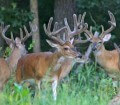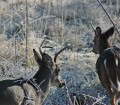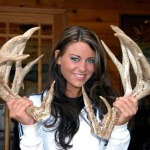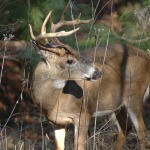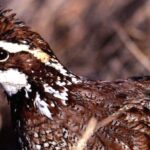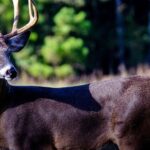John’s Note: What can you learn about deer from antlers? Do bucks grow new antlers each year? If a buck’s an 8-point deer one year, will he be a 9 point the next year? What causes some deer to have high, wide-racked antlers, while other deer may have narrow, spindly antlers? These are just a few of the questions we posed some years ago to two of the nation’s leading wildlife scientists – Dale Sheffer, the then Director of the Bureau of Wildlife Management for the State of Pennsylvania, and Dr. James G. Teer, today the Director Emeritus of the Welder Wildlife Foundation, in Sinton, Texas.
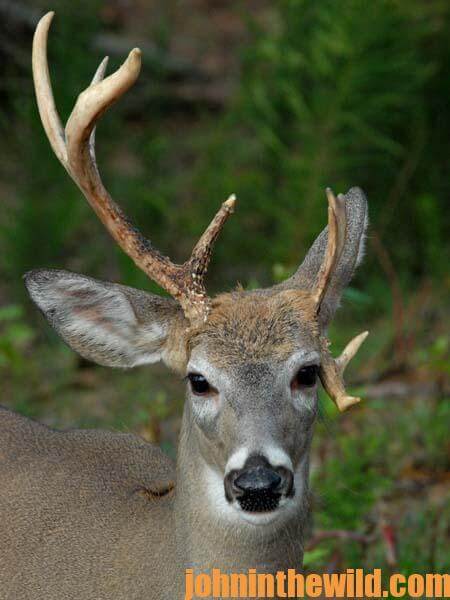 The various racks deer can sport such as palmated, drop-tined, malformed and non-typical often have been the subject of discussion wherever hunters gather.
The various racks deer can sport such as palmated, drop-tined, malformed and non-typical often have been the subject of discussion wherever hunters gather.
When I asked Sheffer what causes a buck to have a palmated rack, he answered that, “Because this genetic trait is passed from one sire buck to its progeny, not all deer have palmated racks. In certain sections of particular states, you’ll see this palmated characteristic in individual deer herds. For many years, hunters in Pennsylvania wanted the Bureau of Wildlife Management to import deer from Michigan, because the Michigan deer seemed to have more palmated antlers. However, we talked to the wildlife scientists in Michigan, who felt that the palmation of antlers wasn’t a general characteristic of their entire herd but rather occurred in isolated herds. The palmation of antlers of deer families is often like the red hair color of people with that genetic characteristic.”
Teer comments that a non-typical rack can have several causes, including influences through genetics. “Sometimes an injury to the antler will cause it to be atypical. For instance, a dropped-tine, which is often sought out by hunters, can be a genetic trait in a particular deer herd. High basket antlers and a wide rack also can be genetic traits.”
atypical. For instance, a dropped-tine, which is often sought out by hunters, can be a genetic trait in a particular deer herd. High basket antlers and a wide rack also can be genetic traits.”
Sheffer explains that numerous factors can cause a malformed rack.
“Oftentimes when the deer are in velvet, the antlers are almost the consistency of jelly sitting on top of the animal’s head.
Even a small piece of brush hitting the antlers can injure them and cause them to grow in an unusual form. Or, the antlers may be snapped off while the antlers are soft. In early to mid-April when the antlers first start to appear, the antlers contain a large blood supply, which makes them very vulnerable to insects like the blow fly. If the blow fly lays its eggs in the deer’s soft antlers, they cause depressions in the antlers.
If an intensive case of insect infestation occurs while antlers are in the velvet, the result will be deformed-looking antlers.
Antlers also may be broken off during the rutting season when deer fight, and a testicle injury can cause the buck’s antlers to be malformed.”
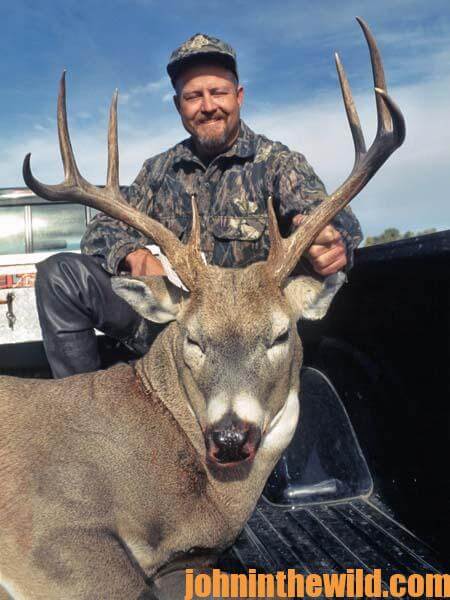 To learn more about deer hunting, you can get John E. Phillips’ Kindle eBooks, “How to Hunt Deer Up Close: With Bows, Rifles, Muzzleloaders and Crossbows,” “PhD Whitetails: How to Hunt and Take the Smartest Deer on Any Property,” “How to Take Monster Bucks,” and “How to Hunt Deer Like a Pro,” or to prepare venison, get “Deer & Fixings.” Click here to get these books.
To learn more about deer hunting, you can get John E. Phillips’ Kindle eBooks, “How to Hunt Deer Up Close: With Bows, Rifles, Muzzleloaders and Crossbows,” “PhD Whitetails: How to Hunt and Take the Smartest Deer on Any Property,” “How to Take Monster Bucks,” and “How to Hunt Deer Like a Pro,” or to prepare venison, get “Deer & Fixings.” Click here to get these books.
Share this page with a friend!
About the Author
John Phillips, winner of the 2012 Homer Circle Fishing Award for outstanding fishing writer by the American Sportfishing Association (ASA) and the Professional Outdoor Media Association (POMA), the 2008 Crossbow Communicator of the year and the 2007 Legendary Communicator chosen for induction into the National Fresh Water Hall of Fame, is a freelance writer (over 6,000 magazine articles for about 100 magazines and several thousand newspaper columns published), magazine editor, photographer for print media as well as industry catalogues (over 25,000 photos published), lecturer, outdoor consultant, marketing consultant, book author and daily internet content provider with an overview of the outdoors.

